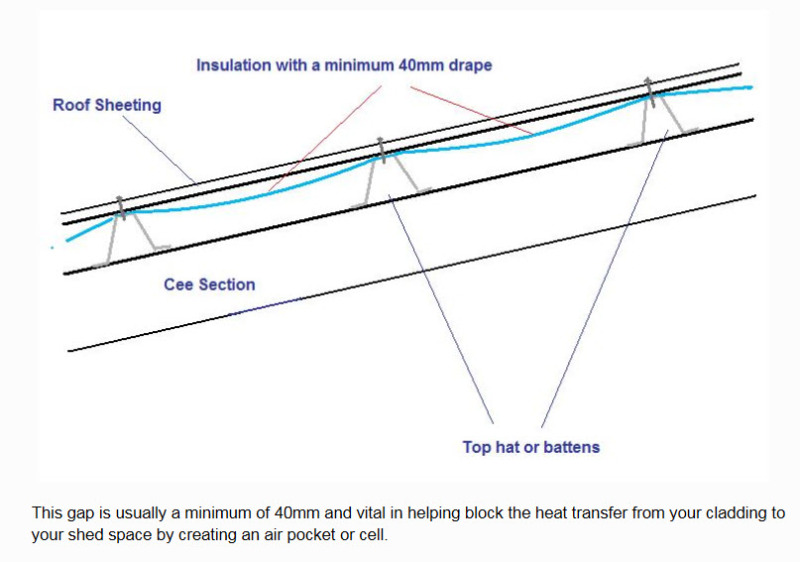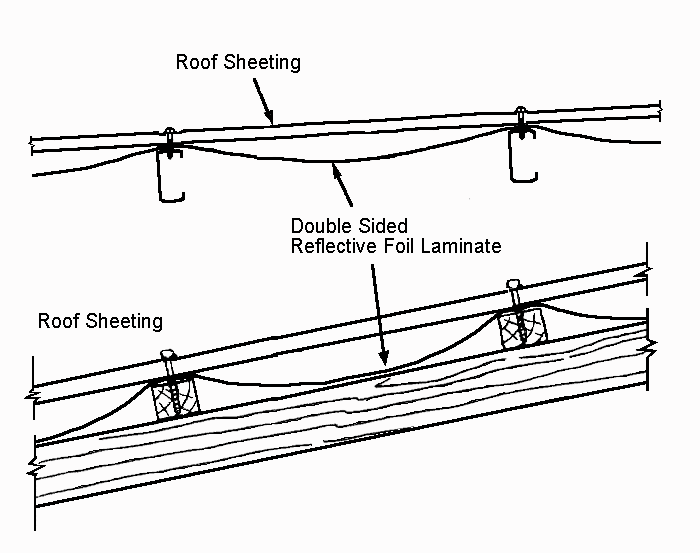lolobau
Civil/Environmental
- Dec 10, 2012
- 115
Hi
I was wondering, this can't be right what most contractors are doing.
They build up the roof structure, provide on top of the purlins the insulation foil and then screw the roof sheeting into it.
Obviously the heated up roof sheeting (corrugated iron) is transferring the heat into the foil (which is somehow aluminum coated)
should this foil not have an air gap above?
but the funny thing is that even the books are showing the detail also the wrong way. See attachment
or am I somehow wrong?
lolobau


I was wondering, this can't be right what most contractors are doing.
They build up the roof structure, provide on top of the purlins the insulation foil and then screw the roof sheeting into it.
Obviously the heated up roof sheeting (corrugated iron) is transferring the heat into the foil (which is somehow aluminum coated)
should this foil not have an air gap above?
but the funny thing is that even the books are showing the detail also the wrong way. See attachment
or am I somehow wrong?
lolobau



![[idea] [idea] [idea]](/data/assets/smilies/idea.gif)
![[r2d2] [r2d2] [r2d2]](/data/assets/smilies/r2d2.gif)



